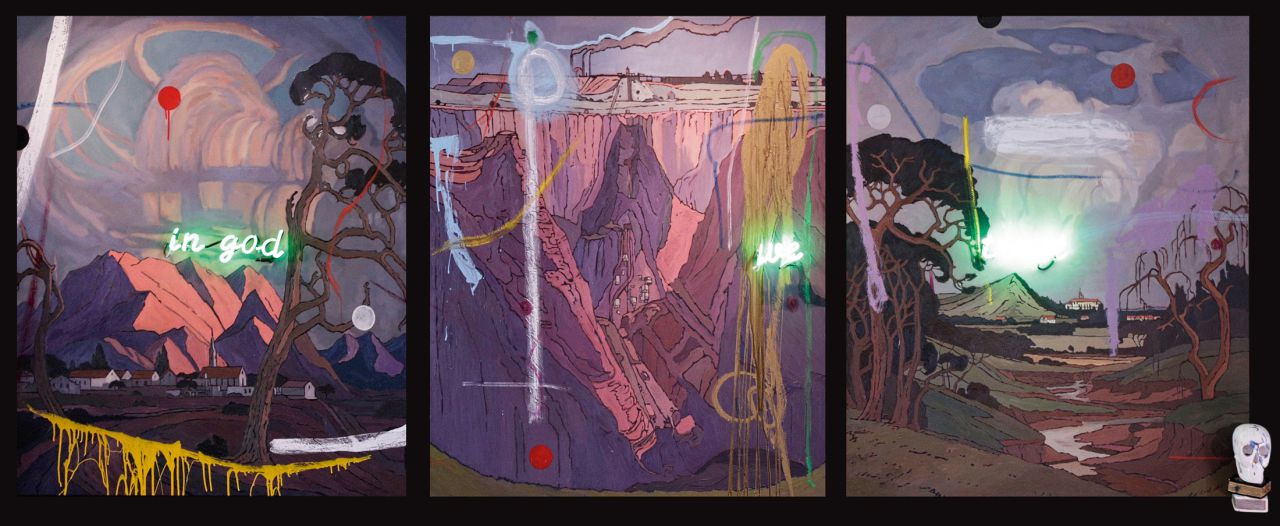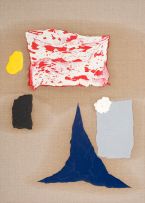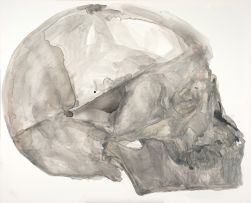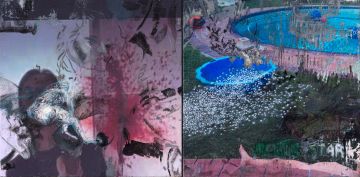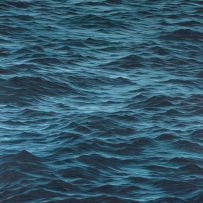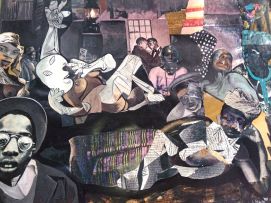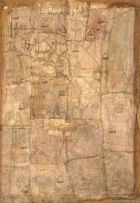In God We Trust, triptych
Wayne Barker
Incl. Buyer's Premium & VAT
About this Item
Notes
The sentence, ''In God We Trust'' is spelled out in bright green neon lights, spread over three large-scale canvases. These canvases are copies of well-known scenes in JH Pierneef's iconic Johannesburg Station Panels: respectively, Karibib, S.W.A., Premier Mine, and Apies Rivier, Pretoria. In addition, the canvases seem to be defaced by splashes of brightly coloured oil paint.
Given Pierneef's status as South African landscape artist par excellence, it is inevitable that he would become the target of art ''iconoclasts'', such as Wayne Barker. Perception was that Pierneef was a mouthpiece of Afrikaner Nationalism, and it is therefore not surprising that anti-Pierneef sentiment started when resistance to the apartheid regime was at its fiercest, namely in the 1980s. Breaking or destroying his images and thereby negating his legacy, became the objective of many South African artists, including Barker, from that time onwards.
Iconoclasm is the breaking or destroying of images, especially of images and pictures set up as great objects of veneration, as in the case of Pierneef's landscapes. What has happened that has made images the focus of so much passion? To the point that destroying them, erasing them, defacing them, has been taken as the ultimate touchstone to prove the validity of one's faith, of one's science, of one's critical acumen, of one's artistic creativity? To the point where being an iconoclast seems the highest virtue, the highest piety, in intellectual circles?
In an interview, Barker said ''I destroyed Apies River in a performance in a black working-class bar for an SABC television show on the artist Braam Kruger, who was living in town. The bar was called Avanganye, ''Let's be friends''. I destroyed the work while being filmed and interviewed, saying, ''This is the violence, this is the workers.'' Pierneef represented everything reprehensible of the old apartheid regime for Barker. According to him, Pierneef's monumental landscapes represented the newfound land of the Afrikaner nation. They saw themselves, not only as superior, but also as a ''chosen people'' in a ''promised land''. Barker goes on to say that he ''recreated the paintings as almost perfect pastiches of the originals commissioned by the government for exhibition at the main railway station in Johannesburg: ''I then created an intervention on the surface of these pastiches using found objects that deconstructed these images and questioned the appropriation of land, exploitation of labour and notions of culture in transit. As I understood it, Pierneef was a kind of propagandist for the white view of South Africa. He belonged to a ruling class and invented South Africa for that class. I try in my work to pull that vision apart by bringing in other possibilities.''1
Barker's Pierneef's, according to John Peffer, ''do not remove the hatred symbols of the old order. They are kept around, roughened up a bit and cast in a new mould. Or perhaps the faults in the mould are what are revealed through overpainting, and the faulty mould is what we are left with? Here destruction is in the service of re-creation, and in this case of re-inclusion, by means of scratching over, what is censored out iconographically, aesthetically from pictures of the South African countryside''.2
Andrew Lamprecht goes one step further when he maintains that Barker's Pierneef-backgrounds ''became ubiquitous wallpaper, a necessary point of reference in his art. His images are contingent, dependent on this background, without which they'd be vacuous" 3. In his defacement of Pierneef, Barker was an early harbinger of the healing processes a fledging, South African democracy had to undergo in a contemporary world.
1. John Peffer. (2009) Art at the End of Apartheid. University of Minnesota press. Page 227.
2. Ibid, page 228.
3. Andrew Lamprecht, 2010, ''Populating Pierneef''. In: Wayne Barker: Super Boring. SMAC and Standard Bank Gallery, page 60.
Exhibited
1:54 Contemporary African Art Fair, New York, 15 to 17 May 2015.
